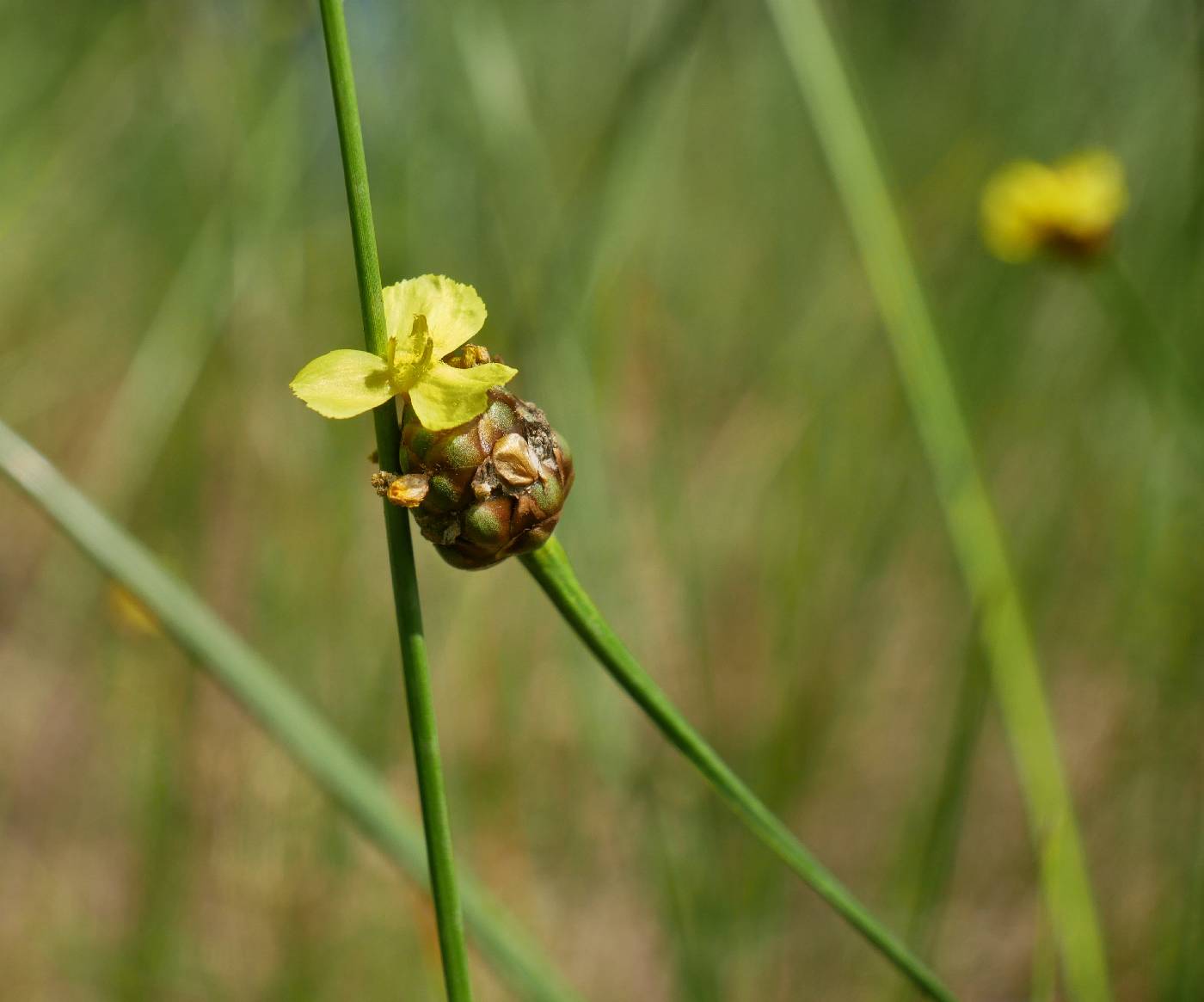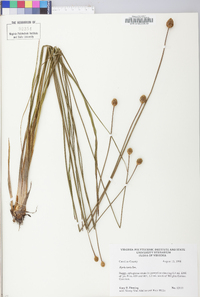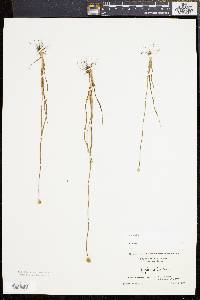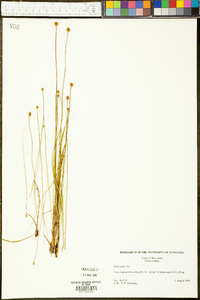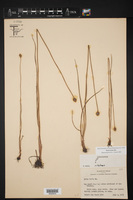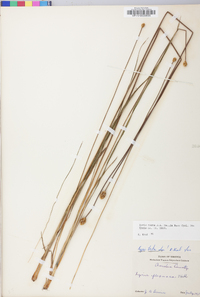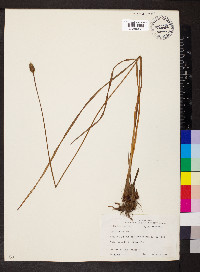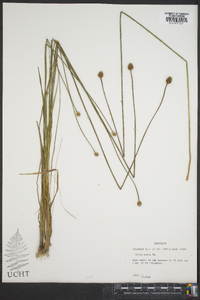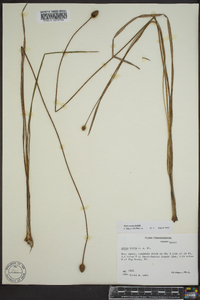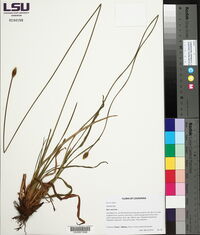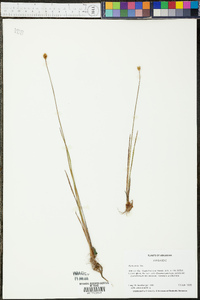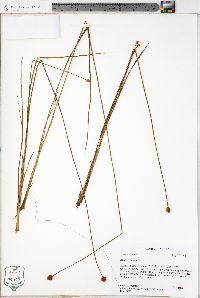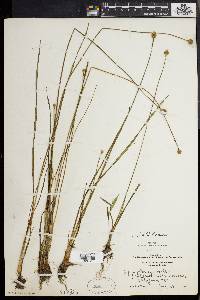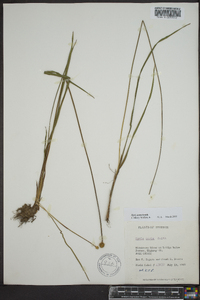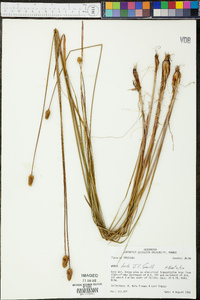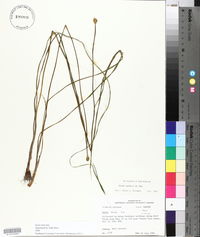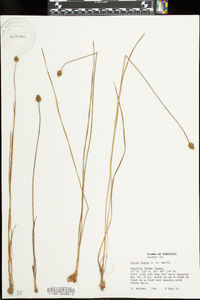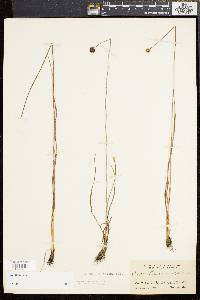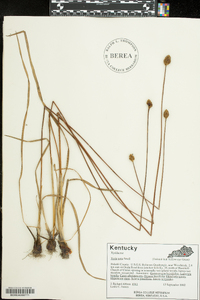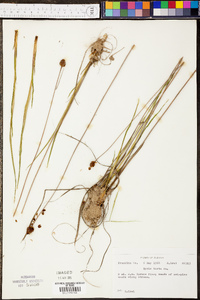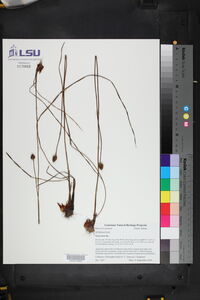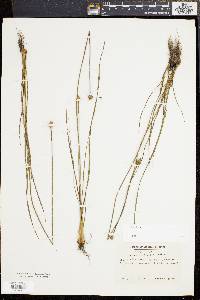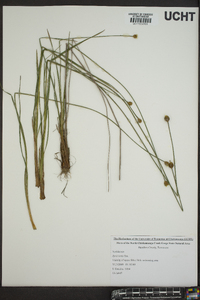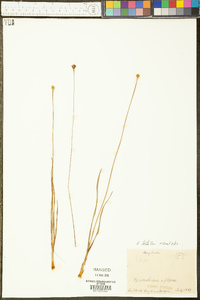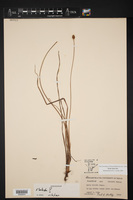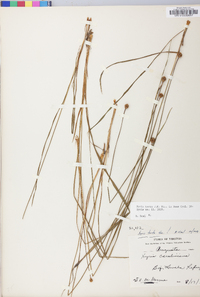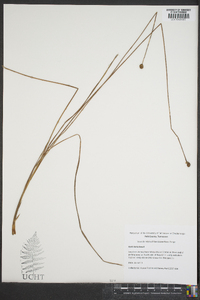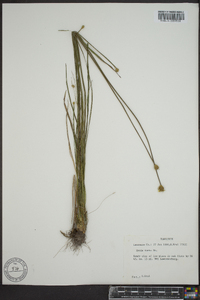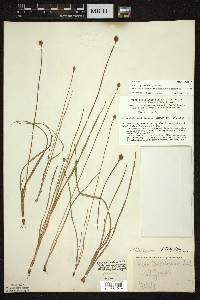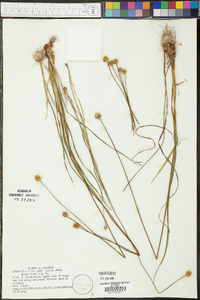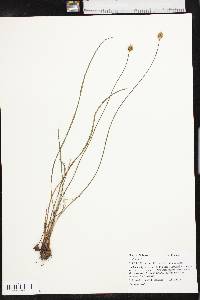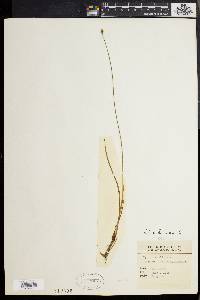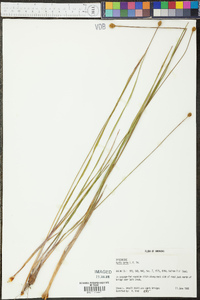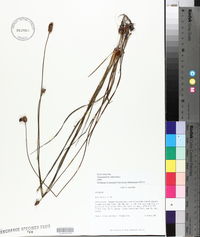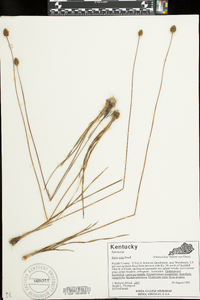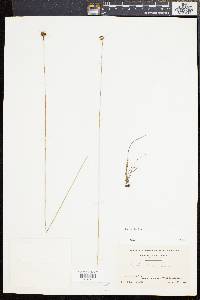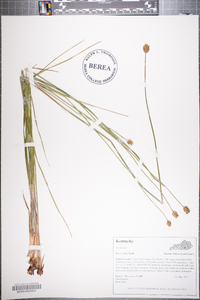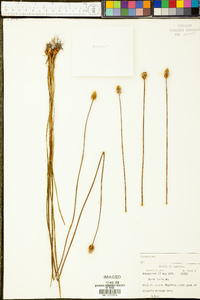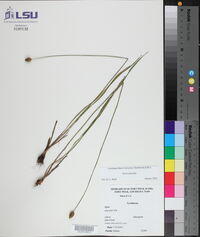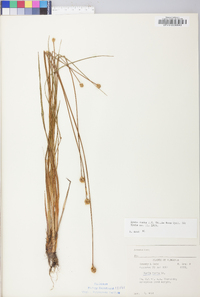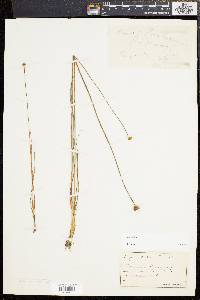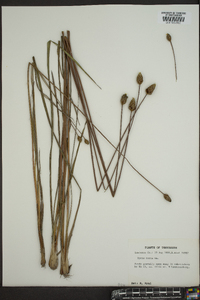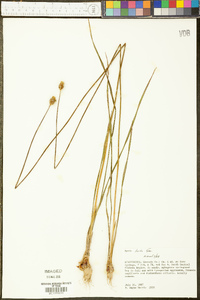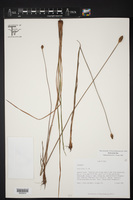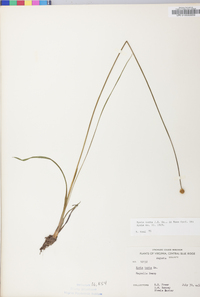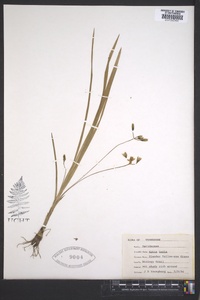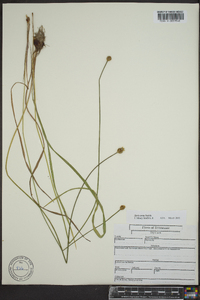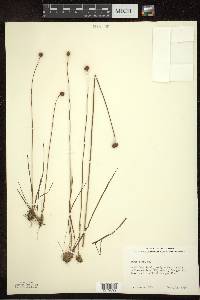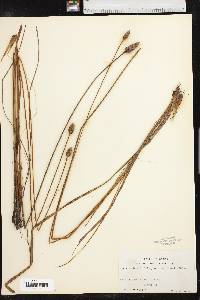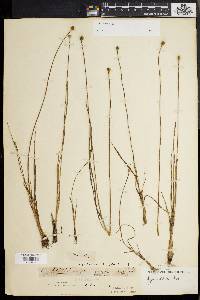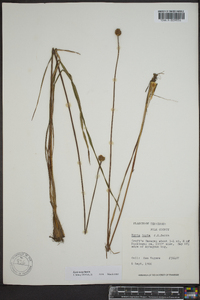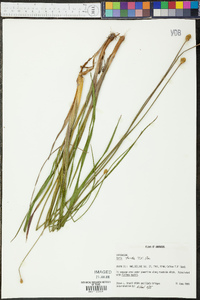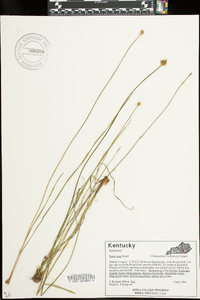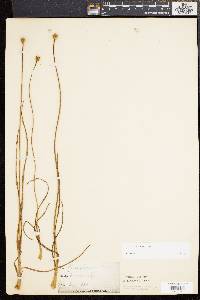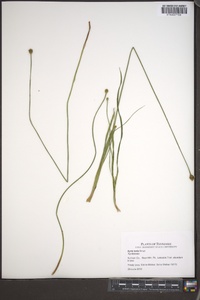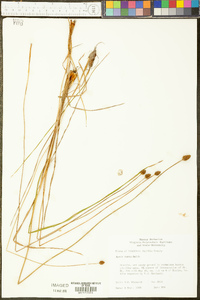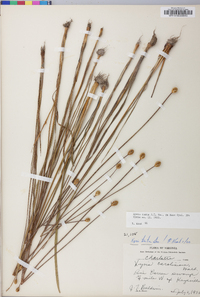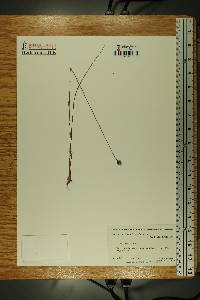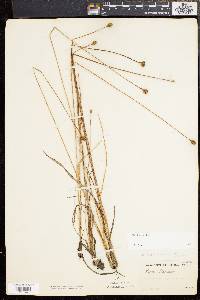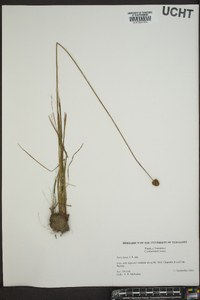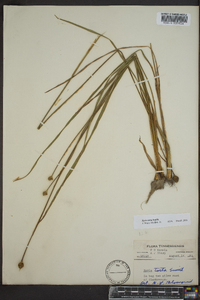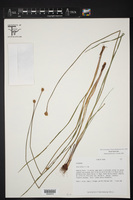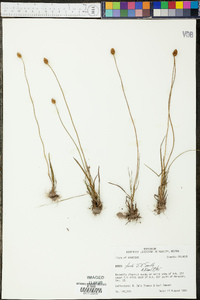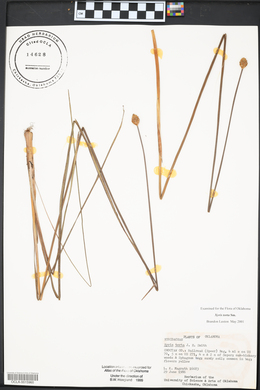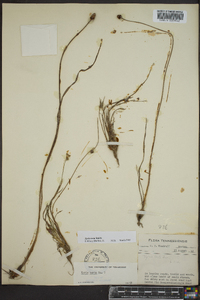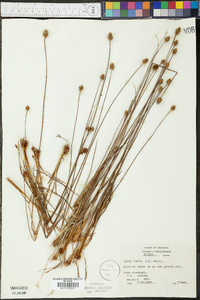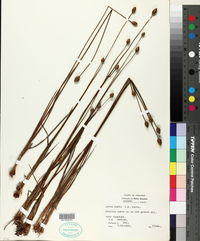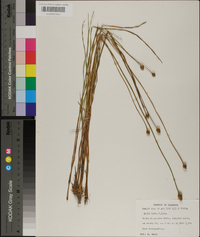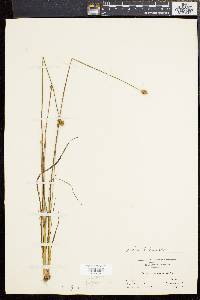Xyris torta
|
|
|
|
Family: Xyridaceae
Slender Yellow-Eyed-Grass, more...common yelloweyed grass
|
Herbs, perennial, cespitose or solitary, 15--80(--100) cm, base abruptly bulbous. Stems compact. Leaves ascending to erect, 20--50 cm; sheath base often reddened or pink; blade green, elongate-linear, twisted, 2--5 mm wide, smooth to papillate, with strongly raised veins, margins smooth or papillate. Inflorescences: scape sheaths exceeded by leaves; scapes linear, flexuous, 1--1.5(--2) mm wide, distally 5--6-ribbed, ribs smooth or papillate; spikes globose to ovoid, ellipsoid, lanceoloid, or cylindric, 8--25 mm, apex acute or blunt; fertile bracts 5--7 mm, margins entire except for red fimbriololation at rounded apex. Flowers: lateral sepals included, strongly curved, 4.5--5.5 mm; keel firm, ciliate except for red-fimbriloolate tip; petals unfolding in morning, blade obovate, 4 mm; staminodes bearded. Seeds translucent, ellipsoid, 0.5 mm, strongly ridged longitudinally with finer cross-lines. 2n = 18. Flowering late spring--fall. Sphagnous bogs, streambanks, pond shores, wet sandy swales, moist disturbed sites, various physiographic provinces; 100--1200 m; Ala., Ark., Conn., Del., Ga., Ill., Ind., Iowa, Ky., La., Md., Mass., Mich., Minn., Miss., Mo., N.H., N.J., N.Y., N.C., Ohio, Okla., Pa., R.I., S.C., Tenn., Tex., Va., W.Va., Wis. Although I have seen no records from Maine, Xyris torta is to be expected there. Xyris torta is the widest-ranging of all North American xyrids and the most expressive ecologically; thus it is not surprising that it varies so much morphologically. It is much ofthen confused in older nomenclature literature with X. caroliniana. Xyris torta is the type species for the genus.
Lvs rather shallowly set, linear, ascending, mostly 20-50 cm נ2-5 mm, twisted, longitudinally grooved, lustrous dark green, fleshy-thickened at the pale to often purplish or castaneous base, some of the outer lvs short and with notably dilated and dark base, the plants thus appearing bulbous; scapes 1.5-8(-10) dm, ±twisted, flexuous, and many-ridged below, 2-4(-6)-ridged above and somewhat flattened under the spike; spikes mostly 1-2.5 cm at maturity, many-fld, ovoid; lateral sep shortly included, lunate, the broad, thickened keel ciliate-scabrous from near the base to the tip, where it bears a small tuft of reddish-brown (seldom pale) hairs; a similar tuft of hairs at the tip of each bract; pet- blades yellow, obovate, 4 mm, unfolding in the morning; seeds 0.5 mm, plump, finely ridged; 2n=18. Wet, acid soil; N.H. to Wis., s. to Va., Ga., Okla., and Tex. Spring-summer. Gleason, Henry A. & Cronquist, Arthur J. 1991. Manual of vascular plants of northeastern United States and adjacent Canada. lxxv + 910 pp. ©The New York Botanical Garden. All rights reserved. Used by permission. From Flora of Indiana (1940) by Charles C. Deam Local in the northwestern part of the state in moist, sandy soil about lakes and in prairie habitats and fallow fields. …… Indiana Coefficient of Conservatism: C = 9 Wetland Indicator Status: OBL |

